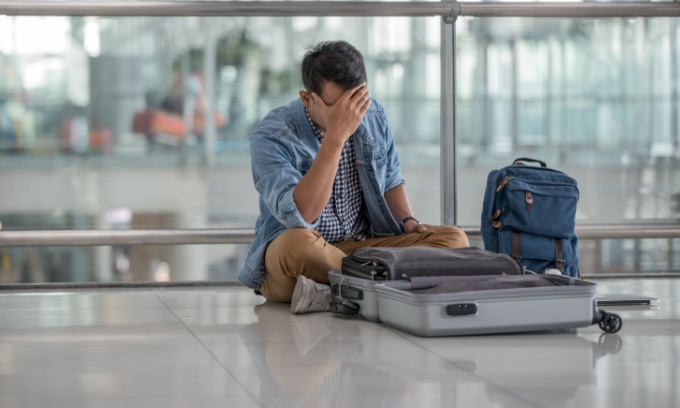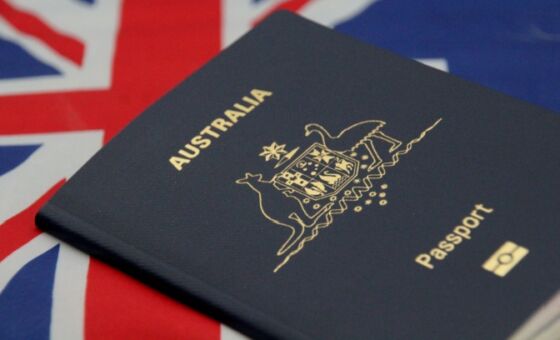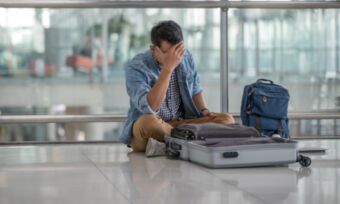“I lost my passport and I fly tomorrow!” What can you do?
Losing your passport abroad can sound like the stuff of nightmares, but if you find yourself in this situation, you can rest assured that there are options available, including applying for an emergency passport.
Ordinarily it takes about three weeks to receive a new passport, but the Department of Foreign Affairs and Trade (DFAT) says you should allow for up to six weeks. If you’re overseas and you need to travel urgently, you can apply for an emergency passport at an Australian embassy or consulate overseas.
You can only get an emergency passport if you’re travelling overseas, not if you have lost your passport in Australia. As an alternative, if you lose your passport in Australia or London, you may be able to get priority processing.
These are generally the two fastest ways to replace a lost passport and it usually takes two to three business days.
What is an emergency passport?
An emergency passport may be issued if your existing passport has been lost, stolen or damaged while overseas, and your travel is urgent (in other words, you can’t wait the normal three to six weeks to get a new passport).
Unlike regular passports, emergency passports are only valid for up to 12 months and they don’t have a chip (meaning they aren’t an ePassport). Because of this, DFAT notes that there are restrictions on using them in some countries. So, it’s important to check the visa requirements of any country you plan to enter or transit through while using an emergency passport.
What do I do if I have lost my Australian passport?
If your passport has been lost overseas and you need to travel urgently, here are the steps you can take:
1. Report it missing
Your first port of call is reporting your passport lost or stolen to the Australian Passport Office. You can do this by contacting your nearest Australian embassy or consulate.
Make sure you’re certain your passport has been lost or stolen, so double check your luggage, as well as your accommodation. As soon as you make a report, your passport will be cancelled and you won’t be able to use it again, even if you end up finding it later on.
2. If your passport was stolen, report the theft to police
If you suspect your passport has been stolen, the Australian Passport Office recommends you report the theft to police and keep a copy of the report. When you apply to replace your passport, you’ll need to provide as much information as possible, including any police report or police report number. The police report may also be needed if you want to claim your passport replacement expenses through your travel insurance policy.
If you’re worried your identity has been stolen or compromised, the Australian Passport Office recommends contacting IDCARE.
3. Apply for an emergency passport
If you’re overseas, you can apply for an emergency passport by contacting your nearest Australian embassy or consulate. If you need help, you can also call the 24-hour Consular Emergency Centre on +61 2 6261 3305. You can also apply for a full-validity passport at the same time and receive it when you return home to Australia.
You’ll also need to make an appointment for an interview and lodge your application in person. Check with the Australian embassy or consulate about what documents you’ll need to bring to the interview. Generally, you’ll need to provide:
- a completed application form,
- documents that provide your identity, such as your birth certificate, Australian driver’s licence and Medicare card,
- documents that prove your Australian citizenship, such as your Australian birth certificate or Australian citizenship certificate,
- two passport photos (with one endorsed on the back by a guarantor).
If you don’t have original documents with you, you may be able to ask the embassy you’re dealing with if a friend or family member can take them to a Passport Agent at a post office in Australia to have them copied, stamped and faxed through.
You may also need to provide evidence of urgency, such as your airline tickets or a letter from an employer. You’ll also have to pay the fees when you lodge your application. At the time of writing, the fee for an emergency passport overseas is $259.
How long does a replacement passport take?
It usually takes between three to six weeks to get a replacement for a full-validity passport, regardless of where you apply. If you’re getting an emergency passport overseas, several embassy websites state that it will usually take two to three business days to receive it.
If you lose your passport in Australia or London and get priority processing, DFAT says your passport will be ready for mailing or collection in two business days.
In other circumstances, DFAT says passports are only issued in less than two business days in Australia if there’s a “compassionate or compelling reason, such as the death or serious illness or an immediate family member or an unexpected need for urgent business travel”.
How much does it cost to replace a lost Australian passport?
As of 1 January 2025, the following fees apply:
- Passport: $412 (for 10-year validity passport for persons aged 16 and over), $208 (for 5-year validity passport for children under 16), $208 (for 5-year validity passport optional for persons 75 and over)
- Emergency passport overseas or a replacement passport: $259
- Overseas surcharge: $184 (adult passport), $90 (child passport)
- Priority processing: $300
If you’re getting a passport while overseas, the Australian Passport Office says you’ll usually have to pay an equivalent amount in the local currency when you lodge your application. You can usually pay by EFTPOS or credit card. Visit the Australian Passport Office website for the latest fees.
Does travel insurance cover a lost, stolen or damaged passport?
Some travel insurance policies provide cover if your passport is lost, stolen or damaged. Depending on the policy you choose, you may also be covered for the cost of replacing your passport and additional expenses you incur as a result, such as reasonable extra accommodation, food and travel expenses.
Contact your insurance provider directly or read your policy’s Product Disclosure Statement (PDS) to see whether cover is available and what the exclusions are. It’s also worth checking what claim limits apply and whether you’ll need to pay an excess when you make a claim.
Be prepared for a lost passport
Losing or having your passport stolen can happen to anyone, no matter how careful you are. But by being prepared, you could potentially make the process of getting a new passport a bit easier for yourself. Here are some steps you could take before you leave home:
- Have a copy of your passport certified by a notary public: You’ll need your passport details if you report it missing or stolen. You may want to take a photo of your passport and keep it on your phone, or write down your passport number. You can use notarial services to legalise copies of ID documents, such as with an Apostille, either in Australia or overseas, with more information available on the Australian Government’s Smartraveller website.
- Have identification at hand: You may want to have forms of identification with you, such as your driver’s licence and Medicare card, and certified or notarised copies of them, depending on where you’re going. But make sure you keep them secure.
- Make a plan to access your birth certificate or citizenship certificate: It’s not a good idea to travel with the original copies of your birth certificate or citizenship certificate. Instead, make sure you know where your original copies are located at home so you can get a trusted family member or friend to access them if needed. It can also be a good idea to get a notarised copy.
It can be a good idea to be aware of where your nearest embassy or consulate overseas is while travelling. If you are visiting some Scandinavian countries, for example, the Australian Embassy in Denmark provides passport, notarial and consular services for Australians in Norway and Iceland as well.








